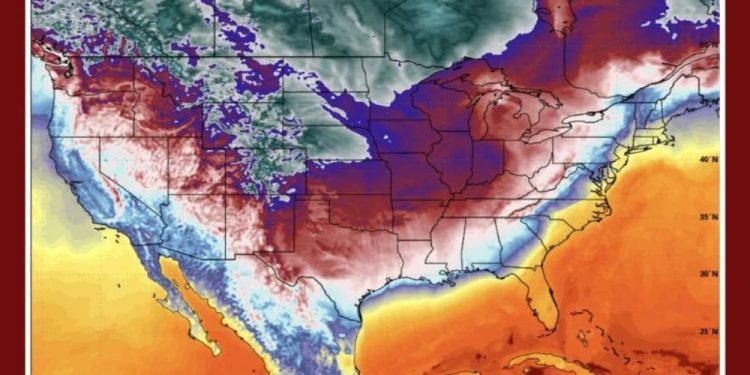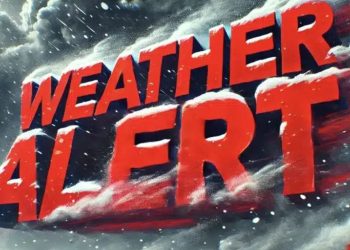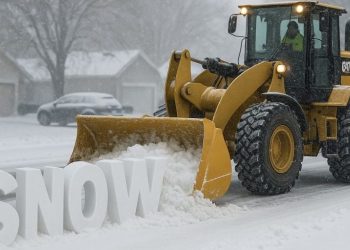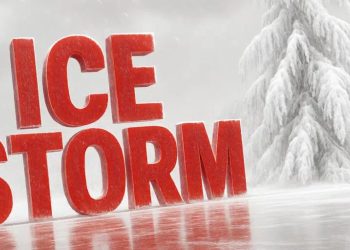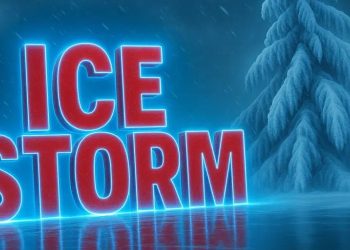A powerful blast of Arctic air is expected to blow across much of the central and southern United States over the weekend following Thanksgiving, ushering in December’s coldest temperatures. Meteorologists believe the system will extend from Texas to Tennessee, lowering temperatures to their lowest levels this season.
According to new forecast data from the European Centre for Medium-Range Weather Forecasts (ECMWF), a cold front will sweep south and east by Saturday, November 29, 2025, delivering wind chills much below average across much of the country.
Early Winter Weather on the Move
Meteorologists at Gulf Coast Severe Weather & Tropics defined the front as “a cold blast with an attitude problem,” indicating that this early-season phenomenon is more aggressive than typical. The system is forecast to plunge temperatures from the Southern Plains through the Midwest and into the Deep South, causing millions to experience a substantial decrease in just 24 hours.
“From Texas to Tennessee, it’s colder than your ex’s heart,” one prediction post joked, but the levity masks a major shift in the country’s weather patterns.
Model estimates indicate apparent temperatures (the “feels like” factor) falling into the 20s and teens across the central United States, while Arkansas, Mississippi, and Alabama may see lows approaching freezing. The Midwest, including Illinois, Indiana, and Kentucky, is likely to experience stinging wind chills, making it feel even colder.
Thanksgiving Leftovers Meet Arctic Air
The front is expected to arrive just a few days after Thanksgiving, disturbing any remaining mild air and replacing it with a stinging, dry chill.
“This map looks like December didn’t stroll in—it slid in,” meteorologists observed, comparing the pattern’s entrance to “muddy boots on Grandma’s linoleum.”
According to experts, the changeover will be abrupt and unexpected. In some areas, temperatures could drop by 30 to 40 degrees in less than 48 hours as cold air moves south. This means that locations that had daytime highs in the upper 60s to mid-70s before the holiday may struggle to reach the 40s by the weekend.
Areas Most Affected by the Temperature Drop
The early December chill will affect numerous states, with the most intense cold air pooling across the central and eastern United States:
- Texas and Oklahoma: Sharp temperature declines, with possible freezing conditions in northern Texas.
- Arkansas, Mississippi, Alabama: Temperatures dipping into the 30s and low 40s, with potential frost inland.
- Tennessee and Kentucky: Overnight lows expected in the 20s; brisk north winds may create icy conditions.
- Midwest (Illinois, Indiana, Ohio): Wind chills near or below freezing with possible early snow flurries north of I-80.
Forecasters predict that Chicago and its surrounding areas will see subfreezing wind chills in the morning, marking one of the season’s first significant winter pattern shifts.
What’s Behind the Sudden Cold Surge?
Meteorologists believe the upcoming cold blast is caused by a powerful upper-level trough that is dipping across the central United States. This pattern allows Arctic air from Canada to flow southward, meeting remnant Gulf moisture and laying the groundwork for windy, dry weather behind the front.
“This is the traditional scenario in which winter announces, ‘Surprise! “I’m early,” said weather experts, adding that this could be the first of several Arctic surges predicted for early December.
Long-range models also show that another reinforcing cold wave could hit the South and Midwest in early December, keeping temperatures below average for many weeks.
Travel and Safety Precautions
With millions anticipated to return home following Thanksgiving celebrations, the post-holiday scheduling may disrupt traffic. Drivers should prepare for the following:
- Slippery road conditions due to sudden freezes overnight.
- Reduced visibility in areas where cold air meets lingering moisture.
- Wind chills that could cause frostbite risk during extended outdoor exposure.
Residents in affected areas should also take precautions to safeguard pets, plants, and plumbing, particularly in places not used to early-season cold blasts.

